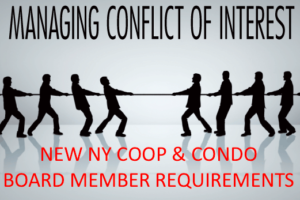Coop and Condo Board Update on Legalization of Balcony Enclosures and Roof Use
The New York City Department of Buildings (DOB) issued a clarification several weeks ago to its policy imposing a strict deadline by which balcony enclosures must either be legalized with DOB permits or removed. In June, the DOB clarified that while all balcony enclosures must be inspected by a qualified exterior wall inspector for conformance with Local Law 11, and that balcony enclosures must be maintained in a safe condition, the DOB will no longer require that the enclosure be legalized in order for the building to file a “safe” or SWARM Local Law 11 inspection report with the DOB. However, any balcony enclosure found to be “structurally unstable” still requires the building owner/cooperative or condominium to notify the DOB and commence repairs “to make the enclosure safe.”
The clarification provided immediate relief to buildings with balcony enclosures with regard to timely and complete Local Law 11 compliance, but it left open the remaining issue of balcony enclosures that were not constructed legally.
In March, the DOB issued a bulletin to provide guidance regarding the New York City Building Code, zoning and DOB filing requirements for rooftops or terraces that are to be occupied “as amenities for the passive enjoyment of the occupants of the building and typically do not involve excessive noise, vibration [or] other nuisances.”—such as “rooftop gardens or green roofs.”
Rooftops and terraces that are open for use by building occupants must be designed in accordance with code. Special consideration should be given to egress issues (occupant loads, number of exits, travel distances, egress widths, lighting, and the like) and other safety requirements such as parapet and guardrail heights.
Rooftops and terraces must also comply with the applicable provisions of the NYC Zoning Resolution. Generally, depending on the zoning district within which a building is located, where such spaces are not enclosed and used as a passive recreation accessory to a principal residential use of the building, this would not result in FAR being required for the use to be lawful. Further, paving materials, other walking surfaces and roof gardens added onto the finished level of such rooftop or terrace are considered permitted obstructions provided that they do not exceed prescribed heights. However, enclosed rooftop greenhouses would require FAR in order to be legal.
DOB Filings in Existing Buildings
Where an existing residential building wants to convert a rooftop or terrace to an amenity for the building’s occupants, such conversion will generally be allowed by DOB without requiring a new or amended Certificate of Occupancy, provided that: the maximum number of occupants complies with the code so that no Public Assembly Permit is required; such conversion does not require an increase in the number of required exits; and no structural alterations are required to increase the rooftop/terrace’s live load capacity as stated in the building’s existing Certificate of Occupancy. For such a conversion, additional code requirements regarding occupants permitted per stairway, structural loads, means of egress and accessibility, exist signs and lighting requirements must be determined and complied with.
Also, pursuant to the code, the design and configuration of rooftop occupancy is subject to the New York City Fire Code (the fire code). Section 504 of the Fire Code—Building and Rooftop Access provides for stairway and other access to roofs, permitted obstructions, clear path protection, exit and rooftop clearances, and the like. Boards when developing a rooftop amenity for their buildings should not overlook compliance with the fire code.
Joseph Colbert is the Managing Attorney at Colbert Law, providing cost-effective representation of condominiums, cooperatives, HOAs and their boards and owners.
© 2018 Colbert Law. All rights reserved. Further duplication without permission is prohibited. For information, contact 646-216-2199 or jcolbert@colbertfirm.com. The opinions expressed are those of the author and do not necessarily reflect the views of the firm, its clients, or any of its or their respective affiliates. This article is for general information purposes and is not intended to be and should not be taken as legal advice.




